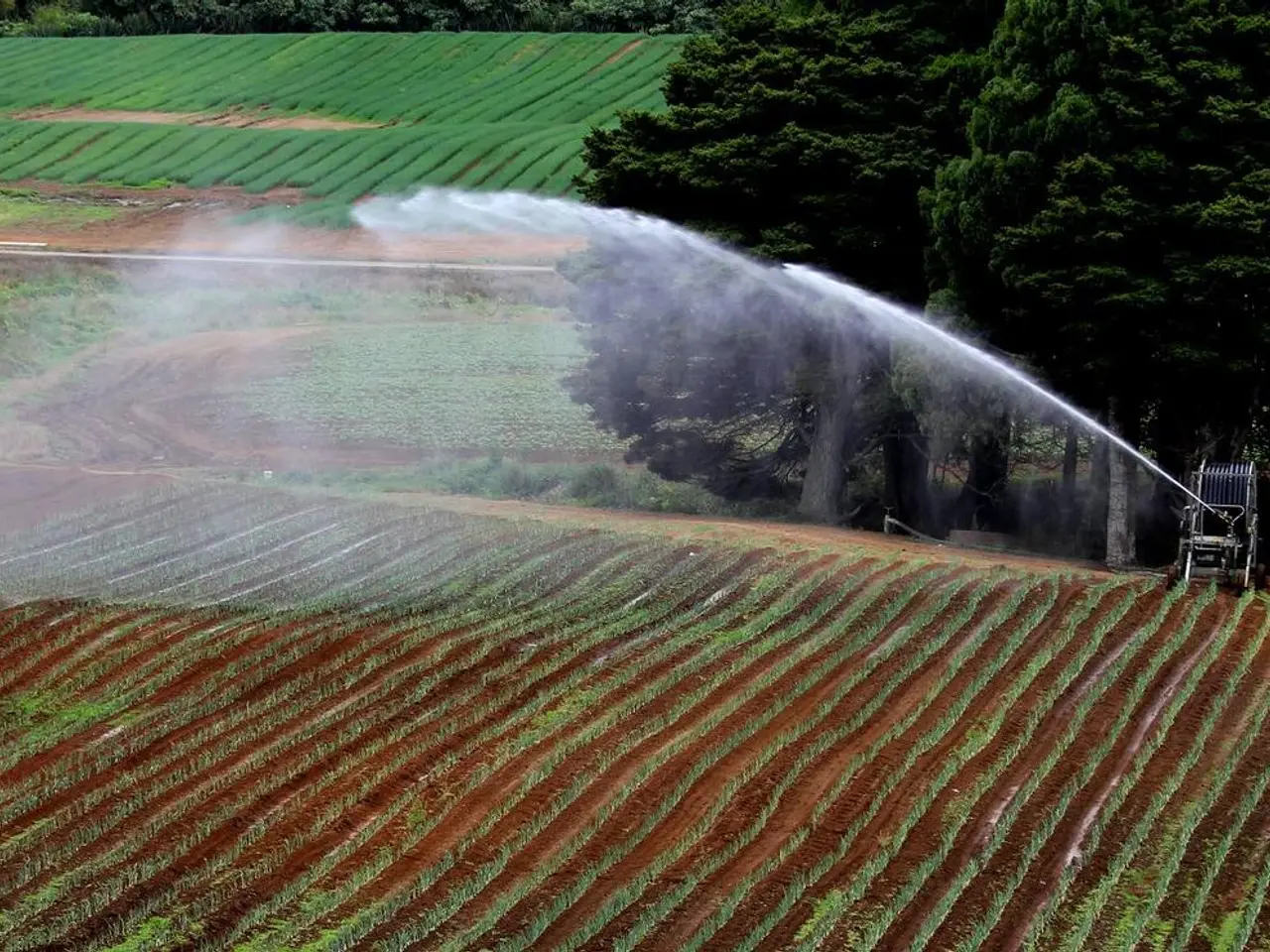Avoiding Irrigation System Failures: Strategies for Reliable Functioning
In the world of landscaping, an efficiently functioning irrigation system is key to maintaining a lush and healthy garden. Regular maintenance is crucial for preventing breakdowns, extending the lifespan of the system, and saving water. Here's a guide to the key practices for maintaining your irrigation system.
1. Regular Inspections
Each season, or at least quarterly, conduct thorough inspections of your irrigation system. Focus on sprinkler heads, valves, pipes, and electrical components to identify wear, leaks, or damage early. This proactive approach allows for prompt repairs, minimising the chances of major issues such as leaks, blockages, and faulty solenoid valves.
2. Cleaning Components
Clean components such as sprinkler heads, filters, and valves regularly to remove dirt, sediment, and mineral deposits that can cause clogs and reduce water flow. This simple task ensures a clean and well-calibrated system, promoting efficient water distribution.
3. Electrical Connections
Check and secure all electrical connections for controllers and solenoids, replacing any corroded wires to maintain steady power and system responsiveness. This step is vital to ensure the system operates smoothly and reliably.
4. Adjusting Water Pressure
Adjust water pressure using pressure regulators or booster pumps to ensure the system operates within its ideal pressure range. This measure prevents damage and ensures efficient water distribution.
5. Flushing Lines
Flush irrigation lines regularly to remove buildup and prevent blockages, especially when the system runs extended hours or during off-seasons. This practice keeps the system running smoothly and reduces the risk of costly repairs.
6. Lubricating Moving Parts
Lubricate moving parts in pumps or valves and test electrical connections to maintain optimal mechanical and electrical performance. This step ensures the system operates efficiently and effectively.
7. Adjusting Watering Schedules
Adjust watering schedules seasonally based on local climate, soil moisture, and plant needs. Ideally, use weather sensors or smart controllers that can calibrate watering times for maximum efficiency and conservation.
8. Establishing a Maintenance Schedule
Establish and adhere to a maintenance schedule that includes inspections, cleaning, repairs, and winterization to protect the system from weather extremes and prevent costly emergency repairs.
By following these measures, you can prevent common issues such as clogged or broken sprinkler heads, leaking valves, and malfunctioning controllers. These practices also improve water efficiency and protect landscapes.
Integrating smart irrigation technologies and local climate considerations further enhances system longevity and performance. A well-maintained irrigation system doesn't need miracles—just the right care.
Remember, regular maintenance is necessary to keep the system in top condition year-round. If parts of the lawn receive too much or too little water, there may be clogged nozzles, misaligned heads, or unbalanced pressure. Acting quickly when these issues arise can prevent further damage.
Dry garden areas or unusual flooding can be clear signs of a problem with the irrigation system. Look for unusual damp spots or puddles as signs of leaks or blockages. To prevent breakdowns, install rain sensors to optimise water use and avoid unnecessary irrigation during rainfall.
Abnormal pressure may indicate leaks, blockages, or damaged solenoid valves, and should be checked regularly. A clean and well-calibrated irrigation system ensures efficient water distribution, saving water and keeping your garden thriving.
In winter or rural areas, pipes and fittings may be damaged by frost or animals. A full inspection is recommended at the start of the season to ensure the system is ready for the cold weather.
In conclusion, investing time and effort into maintaining your irrigation system will pay off in the long run, ensuring the system operates reliably, reduces water waste, extends equipment life, and keeps landscapes healthy year-round. A system built with high-quality components lasts longer and better withstands environmental stress, making it a worthwhile investment for any gardener.
1. Schedule Regular Cleaning Applying the principle of cleanliness, regularly clean components like sprinkler heads, filters, and valves in your irrigation system to maintain efficient water distribution and prevent clogs.
2. Incorporate Lifestyle Choices Utilize weather sensors or smart controllers to create watering schedules that can adapt to local climate, soil moisture, and plant needs—staying current with the latest news and lifestyle choices will help you make informed decisions on conserving water and promoting your home-and-garden's vitality.
3. Protect During Extreme Weather To guard against damage from frost or animals, conduct a full inspection of pipes and fittings at the start of the winter season or in rural areas, ensuring that your home-and-garden's irrigation system stays in top condition even during extreme weather conditions.




